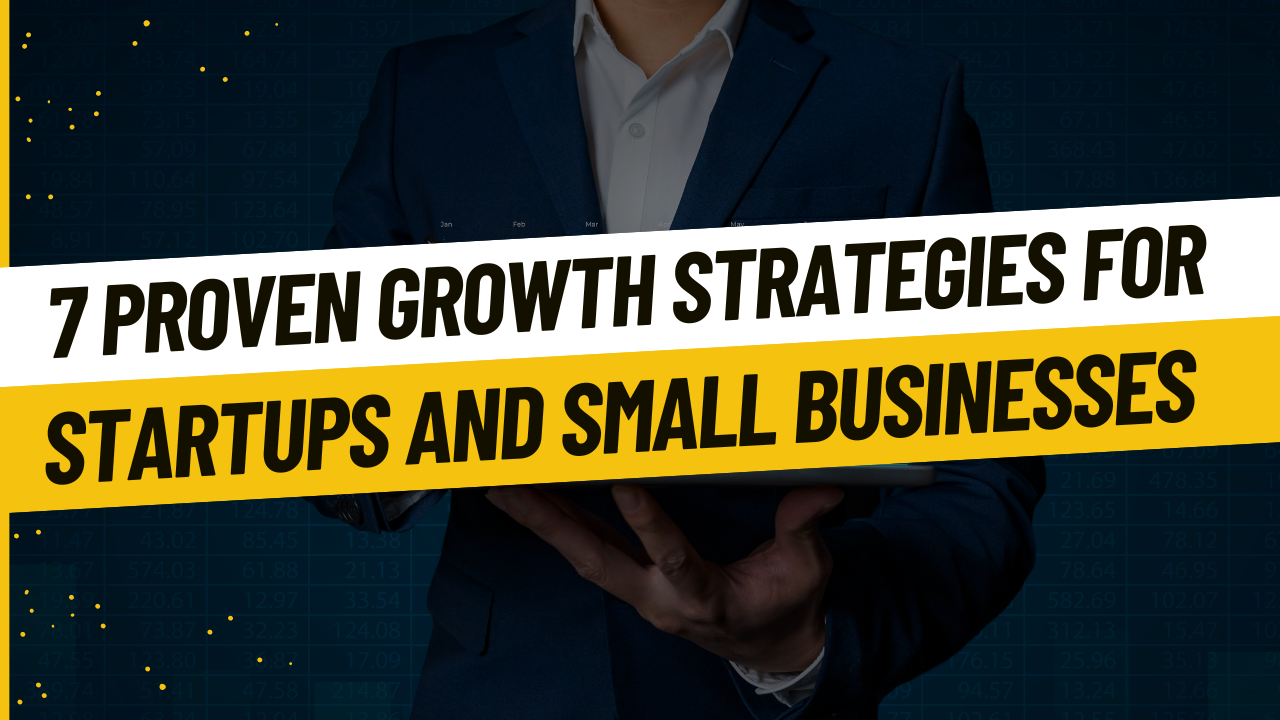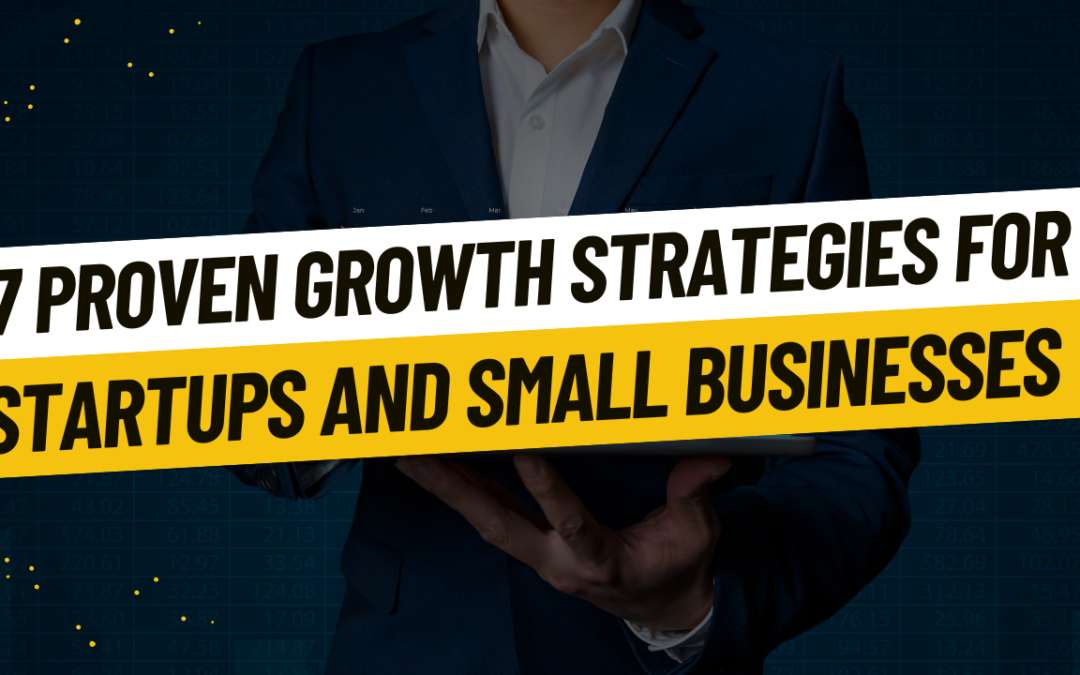
Starting and growing a business is no small feat. If you’re an entrepreneur, you already know it can feel like riding a rollercoaster: one moment, you’re celebrating a win, and the next, you’re trying to figure out how to overcome an obstacle. Growth is a huge part of this journey, but how do you ensure you’re growing the right way without crashing and burning?
Well, buckle up, because we’re diving into seven tried-and-true strategies to help your startup or small business grow in a sustainable, smart way. These strategies aren’t about overcomplicating things with fancy jargon—they’re practical, approachable, and totally doable for entrepreneurs at any stage.Â
1. Expand to New Locations (But Be Smart About It!)
One of the most exciting growth strategies for any business is opening a new location. I mean, who doesn’t want to see their name in lights in multiple cities, right? Expanding geographically can open doors to entirely new markets and customers that might not have been accessible otherwise.
But before you start packing up your desk for a new office, remember: expanding too fast can lead to trouble. It’s like trying to run before you can walk. You need to assess if your current business is running smoothly and whether you’ve truly maxed out your local market.
When done right, opening in a new location has some awesome perks. First, it diversifies your customer base, so if something unfortunate happens to one location (like a natural disaster or local downturn), your whole business doesn’t tank. Plus, it can boost your brand visibility and give you the confidence (and income) to fund future expansions. Just be sure to scope out your new market, consider the competition, and plan for the long haul!
Example: Think about your favorite coffee chain. Chances are, they started with one store, grew their fan base, and then slowly expanded to new locations. They didn’t jump from one to ten stores overnight—they built a solid foundation first.
2. Diversify Your Products and Services
Here’s the thing: You might have a fantastic product or service that’s raking in the sales, but no business can rely on a single offering forever. Customers’ needs change, trends evolve, and let’s face it, variety is the spice of life. That’s where diversification comes in.
Expanding your product or service range can not only increase sales with your existing customer base but also attract new buyers who weren’t interested in your original offering. It’s all about having options! Plus, offering more than one type of product can make your business more resilient if one area slows down—kind of like having multiple safety nets.
Example: If you own a fitness studio that specializes in yoga, why not introduce pilates, dance classes, or strength training? You already have a customer base interested in wellness, so offering related services could boost attendance and keep your members coming back for more.
3. Keep Your Eye on the Competition
No matter what industry you’re in, it’s crucial to stay aware of what your competitors are up to. That doesn’t mean copying them (because who wants to be a knockoff?), but studying their strategies can give you insight into what works and what doesn’t. You might even spot opportunities they’re missing!
When checking out your competition, take note of their target audience, marketing tactics, and even the products they offer. Are they attracting customers you haven’t tapped into yet? What kind of promotions or content seem to engage their audience the most? With this intel, you can adjust your own strategies to stand out.
Example: If your competitor is killing it with video marketing on social media, maybe it’s time to dust off your camera and create some fun, behind-the-scenes content to engage your audience. Or, if they’ve got a killer loyalty program, think about creating your own to keep customers coming back.
4. Use Data to Track Your Progress
Growth isn’t just about trying new things—it’s about figuring out what’s actually working. The last thing you want to do is pour time, money, and energy into something that isn’t moving the needle. That’s why tracking your results is key. The more you know about how your efforts are paying off (or not), the better you can refine your strategy.
There are loads of ways to collect data about your business. Tools like Google Analytics can help you monitor website traffic, while customer surveys can offer valuable insights into what people like—or don’t like—about your offerings. The goal here is to gather actionable data that can guide your decision-making.
But be warned: data can be overwhelming, especially if you’re not sure what to do with it. Start by identifying key performance indicators (KPIs) that align with your business goals, whether that’s revenue growth, customer acquisition, or social media engagement. Then, regularly check in to see how you’re doing, and tweak your strategy as needed.
Example: If you’re running an e-commerce store and notice that certain products sell like hotcakes, while others just sit on the shelf, you can use that info to adjust your inventory and marketing efforts to focus on what your customers actually want.
5. Step Up Your Online Marketing Game
If you’re not online, are you even in business? (Kidding! But also… kinda not.) In today’s world, having a strong online presence is absolutely essential. The internet isn’t just a place to sell stuff—it’s where your customers go to discover new products, read reviews, and make purchasing decisions. In fact, most people are already halfway through their decision-making process before they even land on your website.
So, how do you get your business in front of the right people online? It starts with having a professional website that clearly tells visitors who you are, what you do, and why they should care. From there, you can dive into digital marketing strategies like social media advertising, email campaigns, SEO (Search Engine Optimization), and paid search ads. A multi-channel approach works best, so make sure you’re reaching your audience where they spend their time.
And let’s not forget the power of content. Whether it’s blog posts, videos, or social media updates, creating valuable content helps establish your authority and keeps your brand top of mind. Plus, it’s a fun way to show off your personality!
Example: If you own a bakery, use Instagram to share mouthwatering photos of your latest creations, or start a blog with tips on how to bake the perfect chocolate chip cookie. You could even run Facebook ads targeting local customers to promote seasonal specials.
6. Consider Franchising Your Business
Got a killer business model that’s been proven to work? Franchising might be a great way to grow your brand without taking on all the responsibility (and financial burden) of opening new locations yourself. When you franchise, you essentially sell your business idea to other entrepreneurs who want to operate under your brand name. You get to expand your business while they handle the day-to-day.
Franchising is a win-win: you get paid franchise fees while the new owner benefits from your already-established brand and operational support. It’s especially appealing for small businesses that have a strong brand, consistent customer demand, and a replicable model.
However, franchising isn’t for everyone. Before going down this road, you need to make sure your business processes are rock solid and easy to replicate. You also need to be prepared to offer ongoing support to your franchisees so they can maintain the same level of quality and service.
Example: Think about fast-food chains like Subway or McDonald’s. Each location is independently owned, but they all operate under the same brand, with similar products, systems, and processes. That’s franchising in action!
7. Leverage Partnerships and Collaborations
You don’t have to go it alone in the business world! Partnering with other businesses can be a powerful way to grow your brand and reach new customers. Collaborations can take many forms, from co-marketing campaigns and product partnerships to influencer collaborations and cross-promotions. The key is to find a partner whose audience aligns with yours, so you’re both gaining exposure to potential new customers.
Partnerships can also give you access to resources or expertise you may not have in-house. For example, if you’re a small clothing brand, teaming up with a local jewelry designer for a joint promotion could help you both reach a broader audience without the hefty marketing costs.
Example: A fitness app might partner with a health food company to offer users a discount on nutritious snacks. Both brands benefit by reaching health-conscious customers, and the customers get something of value—it’s a win-win!
Conclusion
Growing your startup or small business doesn’t have to feel like solving a Rubik’s cube in the dark. With a clear strategy and a focus on sustainability, you can steadily build a strong, thriving business. Whether you’re expanding to new locations, diversifying your product line, or stepping up your online presence, these seven growth strategies offer a roadmap to take your business to the next level.
Remember, growth is a marathon, not a sprint. Take the time to assess what’s working, make data-driven decisions, and stay open to new opportunities.

